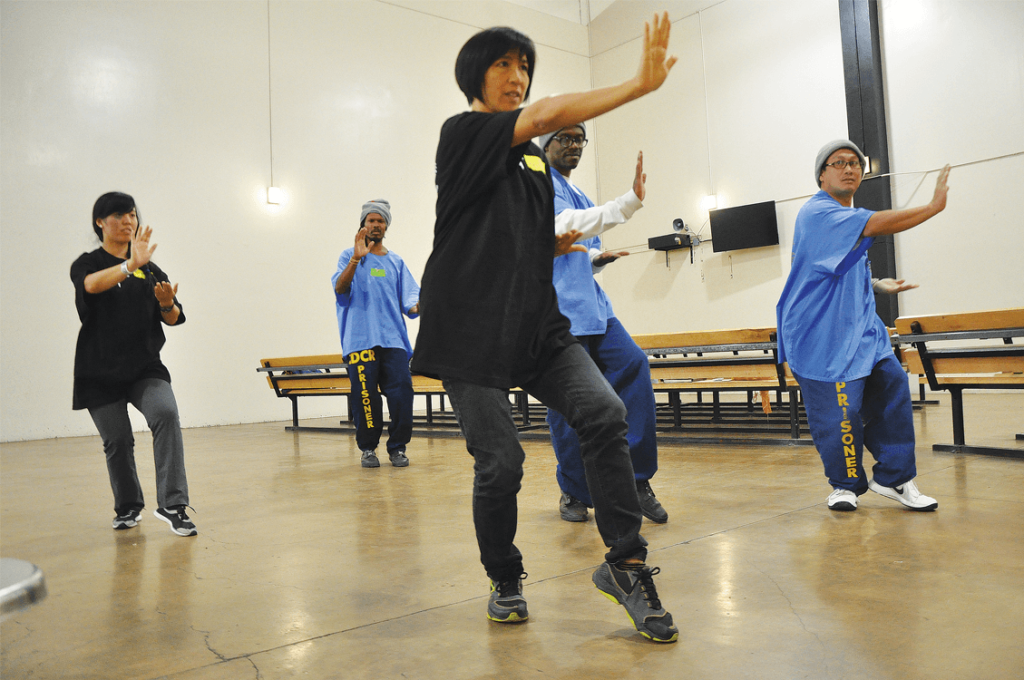
In an effort to fight diabetes, San Quentin Rehabilitation Center this past September started an Exercise Movement class.
The San Quentin medical stated that 13% of the 2950 men incarcerated at SQRC have been diagnosed with Type 2 diabetes. The new class is designed to reverse the diabetic symptoms such as: high blood sugar levels and obesity, which will inherently reduce the patients’ dependence on medications.
“People are usually middle-aged when Type 2 begins, but it can start during adolescence,” stated in the Prisoner Diabetes Handbook. “Type 2 is more common among Blacks, Native Americans and Latinos. Many people don’t know they have Type 2 diabetes, because they don’t feel sick and haven’t had a blood sugar test.”
Worldwide, more than 382 million people are said to have diabetes.
SQRC resident Michael Burroughs said that he lost ten pounds after just nine workout sessions, and as a result has reduced his daily insulin shots.
The class provides a structured exercising environment for those living with the disease, encouraging the elderly living with diabetes to become physically active.
It is a volunteer program for diabetics, including those with pre-diabetic conditions; members receive unwavering support from incarcerated medical recreation aides and medical staff.
At this time there is a waiting list of more than thirty residents, who are anxious to combat their diabetes.
The exercise program meets on Tuesdays and Thursdays in the prison’s gymnasium, between 8-10 a.m. Tuesdays are for strength training, and Thursday are for Cardiod-training; with each class has 10-13 participants.
SQRC’s Chief Medical Officer, Dr. A. Pachynski supports the program, and supervised by assignment office’s Lt. Schlosser. Pharmacist Paul Ganaden, and physical therapists, Michelle and Tianna, are specialists who assist with the safety of movement exercise.
“I saw the opportunity to fill the need of improving the exercise options for our residents,” Michelle said.
According to Tianna, her objective is to improve the overall health of the incarcerated people at SQRC.
Lt. Schlosser said that after he saw a video of Folsom State Prison’s geriatrics and diabetic exercise program, he thought something at San Quentin would bring some positivity here.
The complications from diabetes could bring blindness, the loss of toes and even feet, and even death from cardiovascular disease.
According to the program, when exercising people use energy, which comes from glucose (carbohydrates and sugars) in our blood stream. Our blood stream feeds our muscle cells, which allows the energy to be used.
It is critical for those living with diabetes to keep to a low-carb diet, minimizing their sugar intake and regularly engaging in physical activity. The energy that comes from exercising burns glucose, which is found in carbohydrates and sugar in the bloodstream.
Thus researchers recommend that people exercise three or four times a week, with no more than 48 hours in between, doing a variety of aerobics and resistance conditioning.
The exercise program has high hopes of including high-intensity training in multiple disciplines, continuing on from the strength and cardio-conditioning on to yoga and the possibility of mixed martial arts and boxing.
It also hopes to offer certification of personal trainers and strength and conditioning coaches among those in the class.
According to the Exercise Movement Class most Americans that practice unhealthy eating habits, eat for pleasure, rather than fuel. Our bodies were not meant to consume endless amounts of carbohydrates and sugars.
Along with the physical activity, the program also offers instructions in nutrition facts that help with overeating.
If the resident’s interest in the program continues to grow, the medical recreation aides will utilize the main exercise yard to accommodate more classes, further reaching out to more residents living with diabetes.